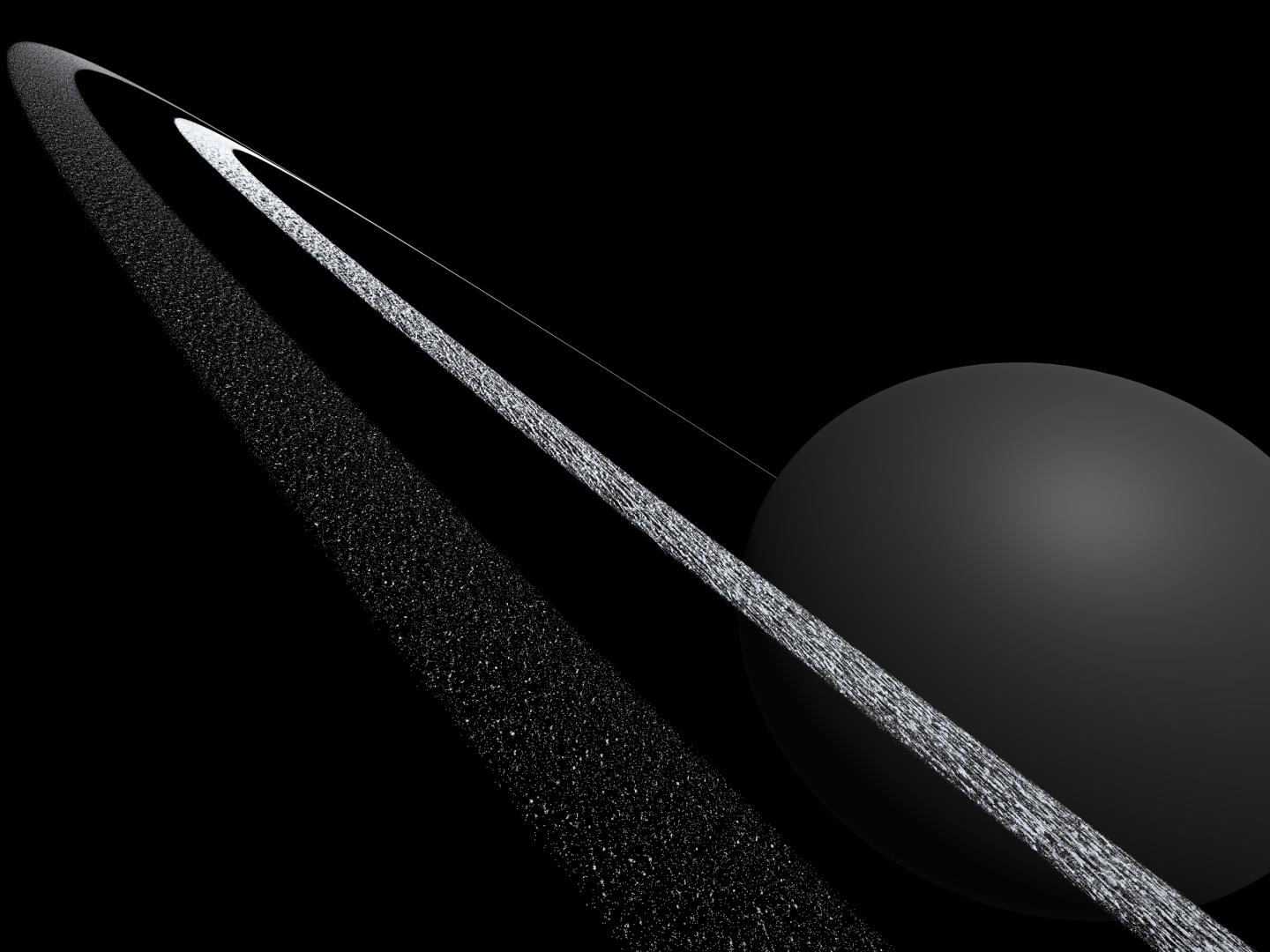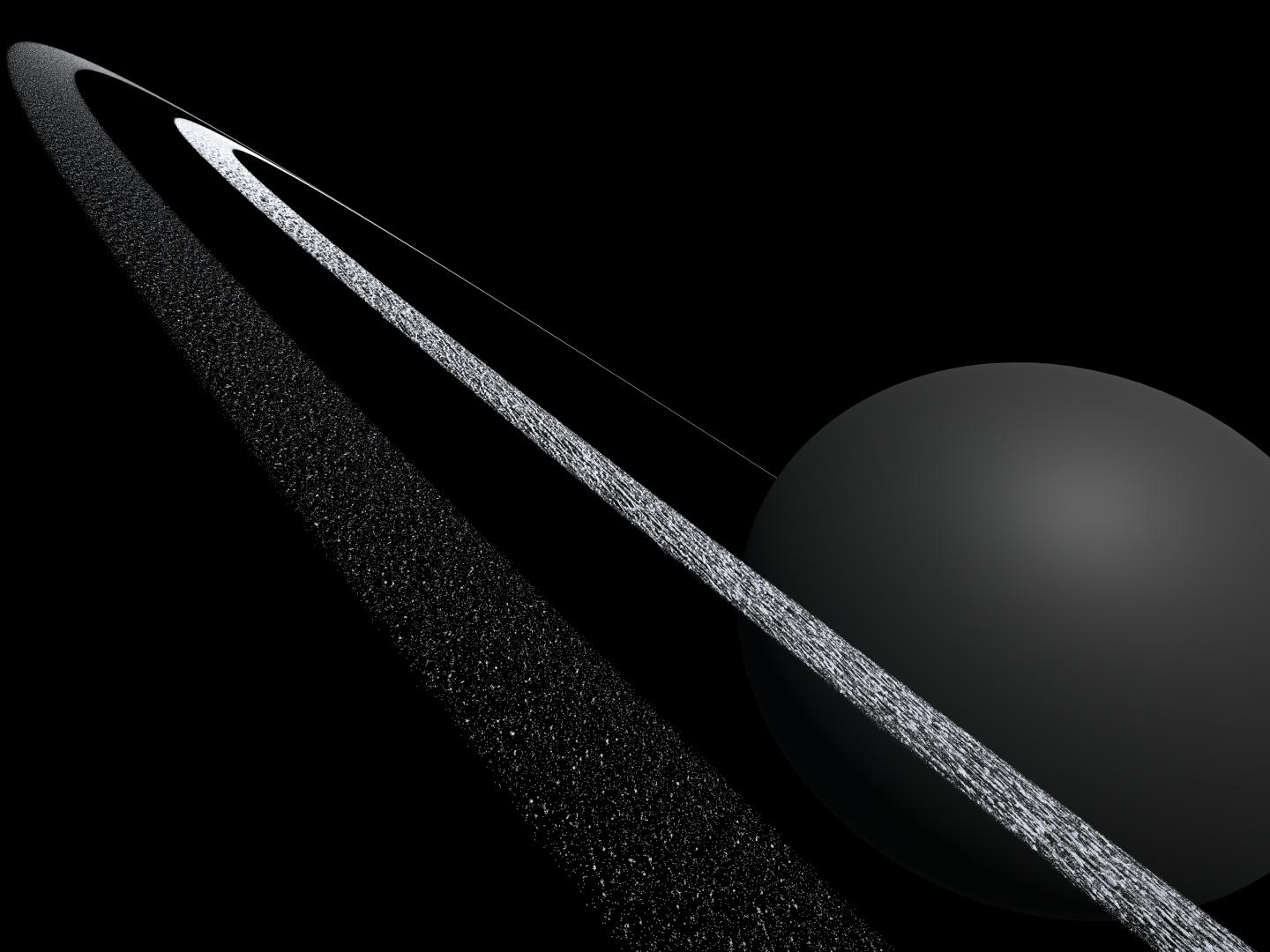
Credit: Shugo Michikoshi, Eiichiro Kokubo, Hirotaka Nakayama, 4D2U Project, NAOJ
A team of researchers in Japan modeled the two rings around Chariklo, the smallest body in the Solar System known to have rings (Figure 1). This is the first time an entire ring system has been simulated using realistic sizes for the ring particles while also taking into account collisions and gravitational interactions between the particles. The team's simulation revealed information about the size and density of the particles in the rings. By considering both the detailed structure and the global picture for the first time, the team found that Chariklo's inner ring should be unstable without help. It is possible the ring particles are much smaller than predicted or that an undiscovered shepherd satellite around Chariklo is stabilizing the ring.
In order to elucidate the detailed structure and evolution of Chariklo's rings, Dr. Shugo Michikoshi (Kyoto Women's University/University of Tsukuba) and Prof. Eiichiro Kokubo (National Astronomical Observatory of Japan, NAOJ) performed simulations of the rings by using the supercomputer ATERUI*1 at NAOJ. They calculated the motions of 345 million ring particles with the realistic size of a few meters taking into account the inelastic collisions and mutual gravitational attractions between the particles. Thanks to ATERUI's many CPUs and the small size of Chariklo's ring system, the researchers successfully performed the first ever global simulation with realistic sized particles.*2
Their results show that the density of the ring particles must be less than half the density of Chariklo itself. Their results also showed that a striped pattern, known as "self-gravity wakes," forms in the inner ring due to interactions between the particles (Figure 2). These self-gravity wakes accelerate the break-up of the ring. The team recalculated the expected lifetime of Chariklo's rings based on their results and found it to be only 1 to 100 years, much shorter than previous estimates. This is so short that it's surprising the ring is still there.
The research team suggested two possibilities to explain the continued existence of the ring. "Small ring particles is one possibility. If the size of the ring particles is only a few millimeters, the rings can be maintained for 10 million years. Another possibility is the existence of an undiscovered shepherd satellite which slows down the dissolution of the rings." explains Prof. Kokubo.
Dr. Michikoshi adds, "The interaction between the rings and a satellite is also an important process in Saturn's rings. To better understand the effect of a satellite on ring structure, we plan to construct a new model for the formation of Chariklo's rings."
Ring systems, such as the iconic rings around Saturn and Uranus, are composed of particles ranging from centimeters to meters in size. Until now, the difficultly of calculating the trajectories and mutual interactions of all these particles had confounded attempts to study rings through computer simulations. Previous researchers have either simulated only a portion of a ring system ignoring the overall structure, or used unrealistically large particles and ignored the detailed structures.
In 2014, two rings separated by a gap were discovered around Chariklo, the largest known centaur. Centaurs are small bodies wandering between Jupiter and Neptune. Although Chariklo is only hundreds of kilometers in size, its rings are as opaque as those around Saturn and Uranus. Thus Chariklo offered an ideal chance to model a complete ring system.
###
Notes
*1 "ATERUI" is a supercomputer for astrophysical simulations in the Center for Computational Astrophysics, NAOJ. Its theoretical peak performance is 1.058 Pflops. It is installed at NAOJ Mizusawa Campus in Oshu City, Iwate, Japan. (Related Aeticle: Supercomputer for Astronomy "ATERUI" Upgraded to Double its Speed. (November 13, 2014))
*2 This study used the general-purpose high-performance library for particle simulations FDPS (Framework for Developing Particle Simulator), which was developed by RIKEN Advanced Institute for Computational Science. On parallel computers such as ATERUI, FDPS calculates particle interactions with the ideal load balancing efficiently. By developing the new simulation code with FDPS, the research team succeeded in global simulations of the rings.
Media Contact
Dr. Hinako Fukushi
[email protected]
http://www.nins.jp/english/
############
Story Source: Materials provided by Scienmag





